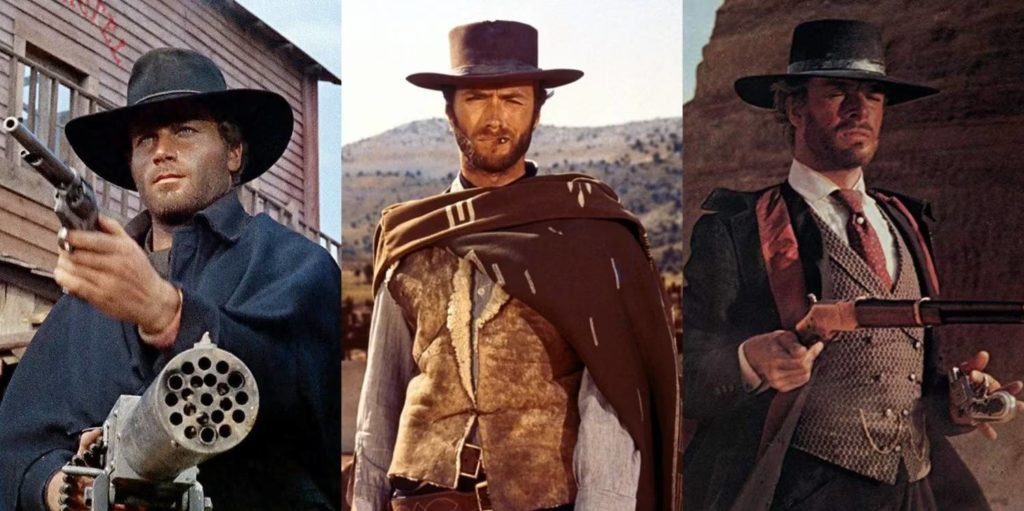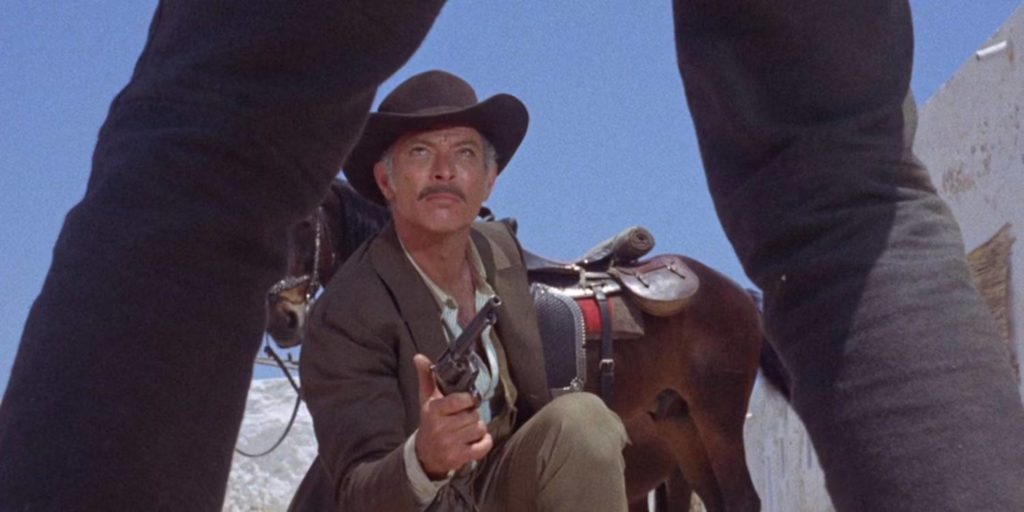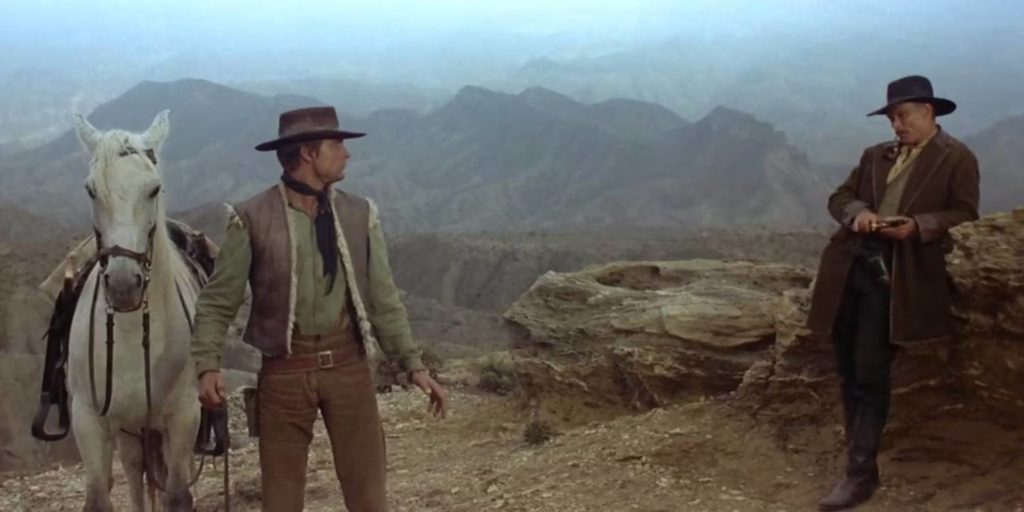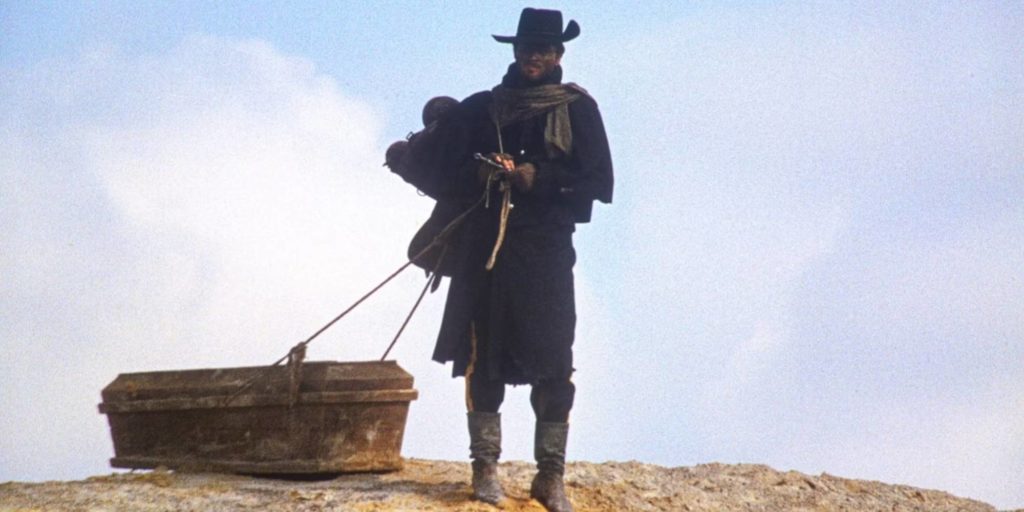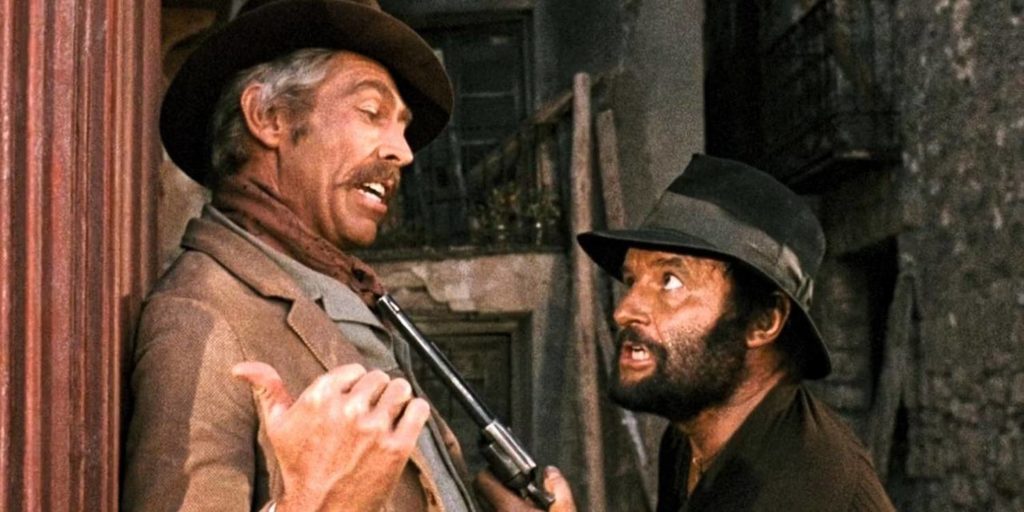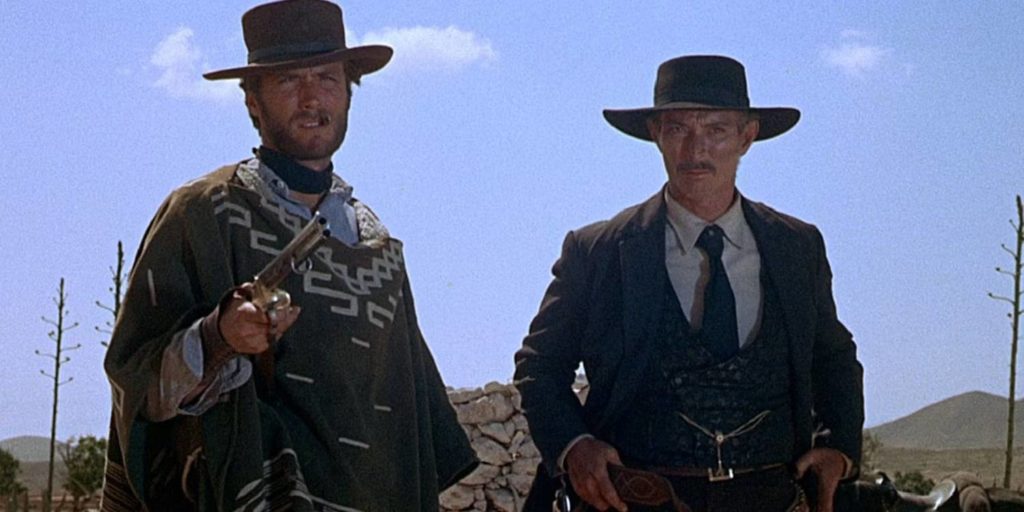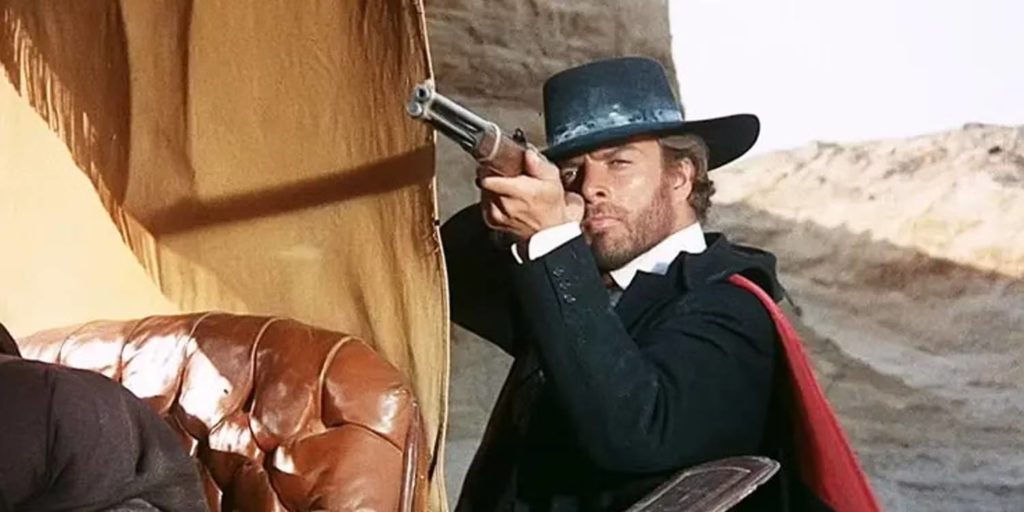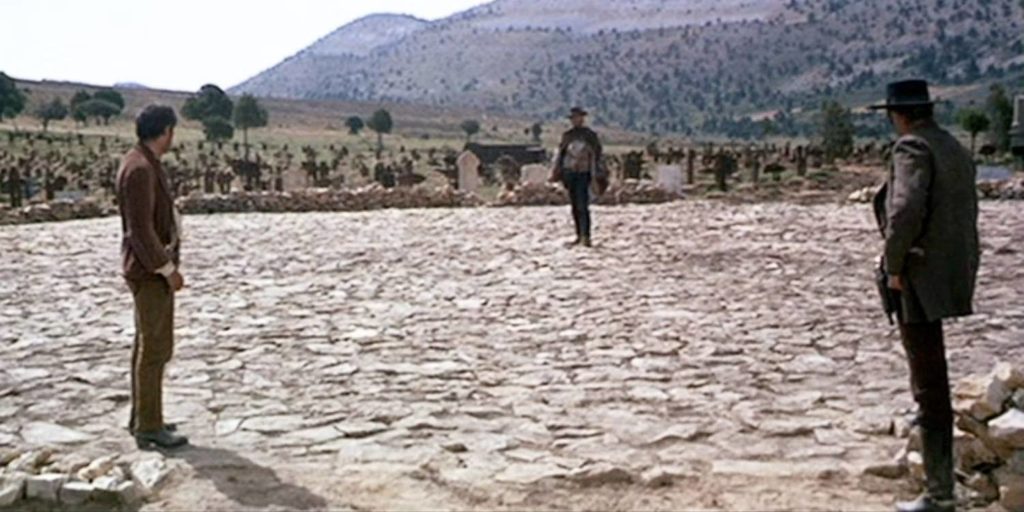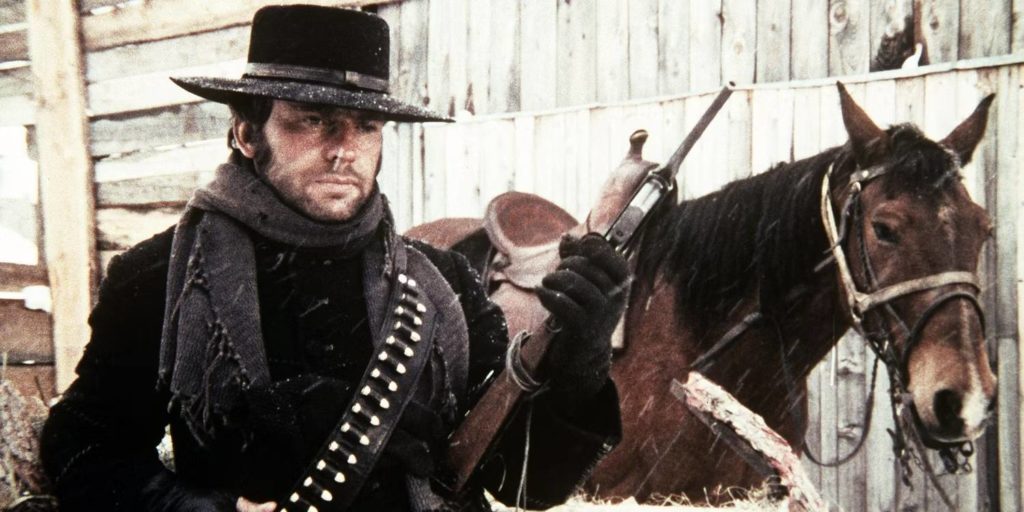In the middle of the 1960s, at the end of the American Western genre’s golden age in film, it appeared that moviegoers had had enough of cowboys and gunfights. But just as the genre’s saloon doors were about to close, a wave of Italian directors kicked them open once more, like a vigilante gunslinger getting ready to save a town.
The so-called “Spaghetti Westerns,” which were filmed primarily in Spain and Italy, reinvented Western themes through a grimy, sweaty, and morally dubious lens. The subgenre fit the subversive counterculture and changing tastes of moviegoers wonderfully at the time. Here are some of the genre’s best examples of horse chases, bank robberies, and epic stare-downs, along with some standout musical compositions.
‘A Fistful of Dollars’ (1964)
Clint Eastwood’s character, an unnamed traveller, enters the sleepy, run-down village of San Miguel. He doesn’t have to wait long to find himself stuck between the two rival groups of the town. He then plays both sides in an effort to drive them out of the community and earn some more cash.
Both Clint Eastwood and the spaghetti western were propelled into the public by this adaptation of Akira Kurosawa’s Yojimbo. Success was ensured by Leone’s keen eye, Eastwood’s stoic acting, and one of the genre’s early, outstanding compositions by Ennio Morricone. A Fistful of Dollars cleared the way for a completely new genre to take the globe by storm while later films, including Leone’s own, would go on to build upon the concept.
‘Day of Anger’ (1967)
Street sweeper Scott Mary (Giuliano Gemma) notices the arrival of outlaw Frank Talby (Lee Van Cleef) in the sleepy village of Clifton. Scott, an aspiring gunfighter himself, eventually persuades Talby to teach him the ropes without being aware of the outlaw’s evil intentions.
In Tonino Valerii’s Day of Anger, Van Cleef continues his Spaghetti Western comeback by putting his seasoned worldliness to use once more. The trainee-mentor relationship at the centre of the movie is enhanced by the way he and Gemma complement one another so well. The inevitable showdown between Talby and Scott, however, leads to a surprisingly rousing conclusion that will have you cheering at the screen.
‘Death Rides a Horse’ (1967)
Bill (John Phillip Law) has been preparing to exact revenge on his family’s killers for 15 years. A loner named Ryan (Lee Van Cleef) shows up in town looking for his own form of vengeance just as he starts carrying out his plan.
Following his roles in two of Sergio Leone’s critically acclaimed “Dollars” films, Van Cleef embraced his career’s second wind as an old west wise guy guiding the impetuous youngster. The picture lifts itself despite having a straightforward genre plot because to its precise direction, Ennio Morricone’s chant-like score, and a firefight that takes place in the middle of a sandstorm.
‘Django’ (1966)
After saving a prostitute, lonesome Django (Franco Nero) drags a casket with unidentified contents as he leads the woman back to town. When they get there, Major Jackson (Eduardo Fajardo), a radical with whom Django has a score to pay, is leading a Mexican gang, and Django is caught in the middle.
When Django was first released, the title character quickly established himself alongside Clint Eastwood’s unnamed gunslinger as a genre icon. Nero distinguishes himself by giving the role a grounded contemplation while while getting to display his action-hero skills. Sergio Corbucci, the director, treats us to several shootouts, a fort raid, and a show-stopping finale where we finally get to discover what Django has hidden within that coffin of his, despite the short running time.
‘Duck, You Sucker!’ (AKA ‘A Fistful of Dynamite’) (1971)
An attempt is made by Mexican bandit Juan Miranda (Rod Steiger) to recruit Irish ex-revolutionary Sean Mallory (James Coburn) for a bank robbery. The two occasionally collaborate before joining forces for a more important goal.
In Leone’s final spaghetti western, two complex criminals engage in yet another “bromance.” Leone completely utilises his sense for grandeur, giving us one of the largest battle scenes in the genre, demonstrating there was still petrol in the tank. The movie isn’t only spectacle, though, as the previously described combat leads to a heartbreaking climax that ends Leone’s career in the genre on a solemn and contemplative high.
‘For a Few Dollars More’ (1965)
Clint Eastwood’s “Man With No Name” returns to track down the vile outlaw Indio (Gian Maria Volonte). Colonel Douglas Mortimer (Lee Van Cleef) arrives to claim the same bounty and settle a score with Indio, which causes complications.
The follow-up to Leone’s own A Fistful of Dollars enhances almost every aspect of the original. A surprising amount of humour can be found in the sequences starring Eastwood and Van Cleef because to their engaging connection. Mortimer’s subplot, which is motivated by retribution, adds an emotional thread to the movie that was missing from the first one. A heart-pounding stand-off for the ages ensues when Mortimer finally meets the deranged Indio, one of the genre’s most complex and iconic villains.
‘If You Meet Sartana…Pray For Your Death’ (1968)
William Berger’s character, the bounty hunter Lasky, participates in an insurance fraud scheme while serving corrupt officials. But when he finds himself in the sights of vigilante Sartana (Gianni Garko), who intends to foil his plans, his scheme falls apart.
The campy action-packed frolic If You Meet Sartana…Pray For Your Death more than lives up to its utterly ridiculous title. Although Sergio Leone’s filmography serves as a large portion of the film’s structure, director Gianfranco Parolini offers a quick-witted and pulpy contrast to Leone’s work. The menacingly cool Sartana is like a wild west version of John Wick, killing more people in the first 30 minutes than in the entire majority of spaghetti westerns.
‘Once Upon a Time in The West’ (1968)
When a prostitute from New Orleans (Claudia Cardinale) goes to Flagstone to wed a rancher, she quickly finds out that he has been murdered. The criminal is a rail baron’s henchman (Henry Fonda), who accuses outlaw Cheyenne (Jason Robards) of the killing. In the meantime, a vagabond by the name of Harmonica (Charles Bronson) shows up in town with his own covert plan.
Many people concur that Once Upon a Time in the West is Leone’s greatest work, even though the “Dollars” trilogy will always be his most well-known work. The movie is an operatic epic that is expansive in scope and unique in its storytelling, and it is jam-packed with all the tension, majesty, and skill of 10 Spaghetti Westerns. The outstanding cast is completed by Bronson, who plays Clint Eastwood’s role admirably, and Fonda, who portrays an unconventional evil almost too effortlessly. With Morricone’s electrifying score added, you have a Spaghetti Western masterpiece that will probably keep being rediscoveried and adored for a very long time.
‘The Good, The Bad And The Ugly’ (1966)
In Leone’s acclaimed conclusion to his treasured “Dollars” trilogy, the lives and self-serving goals of a mystery drifter, a cold-blooded bounty hunter, and a wild outlaw intersect. It’s practically impossible to overestimate the work’s fame, duration, and significance because it truly is a mythic masterpiece. For instance, even someone with little to no familiarity with the Spaghetti Western genre is probably able to whistle the tune verbatim.
Each of the interconnecting arcs is captivating throughout because to Wallach’s high-energy performance, which fits flawlessly into the tried-and-true template created by Eastwood and colleagues. The film’s stunning ending, a masterwork of cinematography and sustained suspense, reaches a fever pitch as does Leone’s quest to create his own take on the Western.
‘The Great Silence’ (1968)
In the appropriately named town of Snow Hill, Utah, mute gunman Silence (Jean-Louis Trintignant) prowls the area, shielding the defenceless from the dishonest bounty hunters who live there. When bounty hunter Loco (Klaus Kinski) starts terrorising the community, he and Silence quickly find themselves engaged in a gunfight for Snow Hill’s survival.
The Great Silence by Sergio Corbucci differs from other spaghetti westerns in that it subverts several of the genre’s defining elements. Its revisionist themes and refusal to be reduced to a straightforward tale of good triumphing over evil are complemented by the movie’s snow-covered backdrop, melancholy mood, and literally silent protagonist. Instead, the hero’s journey toward peace is a difficult one, creating a singularly compelling, if occasionally depressing, take on the genre.

